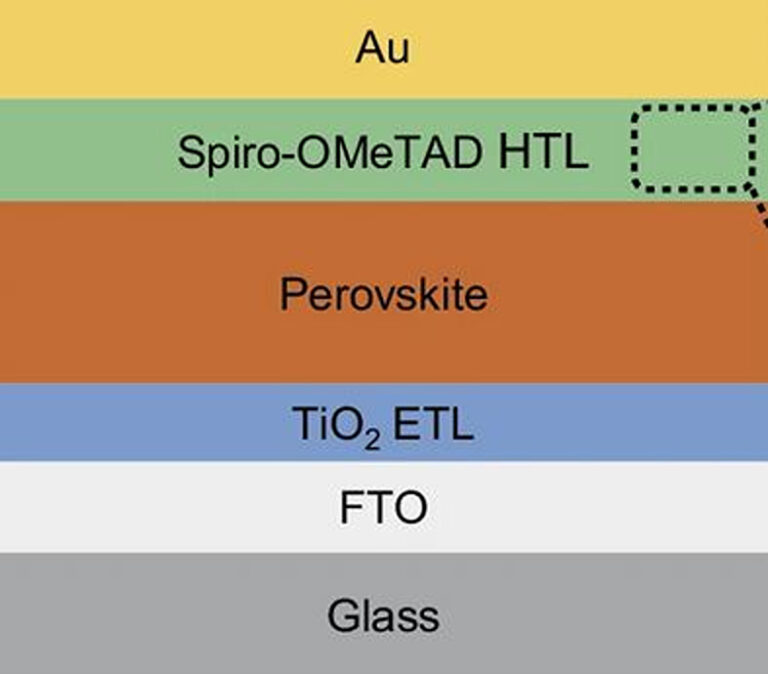Researchers in China have proposed a novel lithium-free doping strategy to fabricate spiro-OMeTAD-based hole transport layers (HTLs) for applications in perovskite solar cells. A PV device built with a salt-doped HTL achieved a record-breaking efficiency of 25.45%.
Scientists from China’s Northwestern Polytechnical University have used a lithium-free doping strategy to fabricate a perovskite solar cell based on a metal-free hole transport layer (HTL) made of spiro-OMeTAd that reportedly offers remarkable levels of efficiency and stability.
The research team explained that for perovskite cell applications, spiro-OMeTAD is commonly doped with a compound known as lithium bis(trifluoromethanesulfonyl)imide (LiTFSI) to improve hole extraction and conductivity. However, this type of doping requires time-consuming air oxidation for 24 hours, which is reported to be an obstacle to the commercial production of perovskite PV devices.
“The inadequate doping effectiveness of this post-treatment process may lead to the retention of unreacted reactants and/or harmful byproducts in the doped spiro-OMeTAD layer, negatively affecting the device efficiency,” the academics pointed out. “Moreover, a key challenge that limits its practical application is the trade-off between high efficiency and stability.”
To solve this problem, they used a salt known as Eu(TFSI) for the doping of spiro-OMeTAD, which can generate oxygen (O2) and facilitate the pre-oxidation of spiro-OMeTAd. “In stark contrast to conventional LiTFSI doping when exposed to air, O2-derived spiro-OMeTAD HTLs can immediately achieve high conductivity and ideal work function without the need for post-treatments,” she added.
By applying this doping strategy, the researchers built the solar cell with a substrate made of glass and fluorine-doped tin oxide (FTO), a electron transport layer (ETL) based on titanium oxide (TIO2), a perovskite absorber, the proposed HTL doped with Eu (TFSI) and a gold (Au) metal contact.
Tested under standard lighting conditions and reverse scanning, the device achieved a power conversion efficiency of 25.45%, an open-circuit voltage of 1,210 V and a short-circuit current density of 25.41 mA cm.2and a fill factor of 82.50%. A reference LiTFSI-doped cell with the same architecture achieved an efficiency of only 23.19%.
“Moreover, the O2-derived devices deliver a stabilized power output (SPO) of 25.22% for 100 seconds, while the SPO of LiTFSI-doped devices just stabilized at 22.48%,” the scientists further explained, noting that the cell also was able to maintain 90%. of its initial efficiency after 1000 hours of operation.
The device was then used to build a 6cm x 6cm perovskite solar panel that achieved an efficiency of 20.35%. The team said this result shows the effectiveness of the new doping strategy, regardless of the size of the devices.
“In perovskite solar cells with post-oxidation-free or Li-free spiro-OMeTAD HTLs, the current O2Work diversion is among the highest in terms of both efficiency and stability,” the academics concluded.
The new doping strategy and cell architecture were described in the article “Superoxide radical-derived metal-free spiro-OMeTAD for highly stable perovskite solar cells”, published in communication about nature.
This content is copyrighted and may not be reused. If you would like to collaborate with us and reuse some of our content, please contact: editors@pv-magazine.com.


